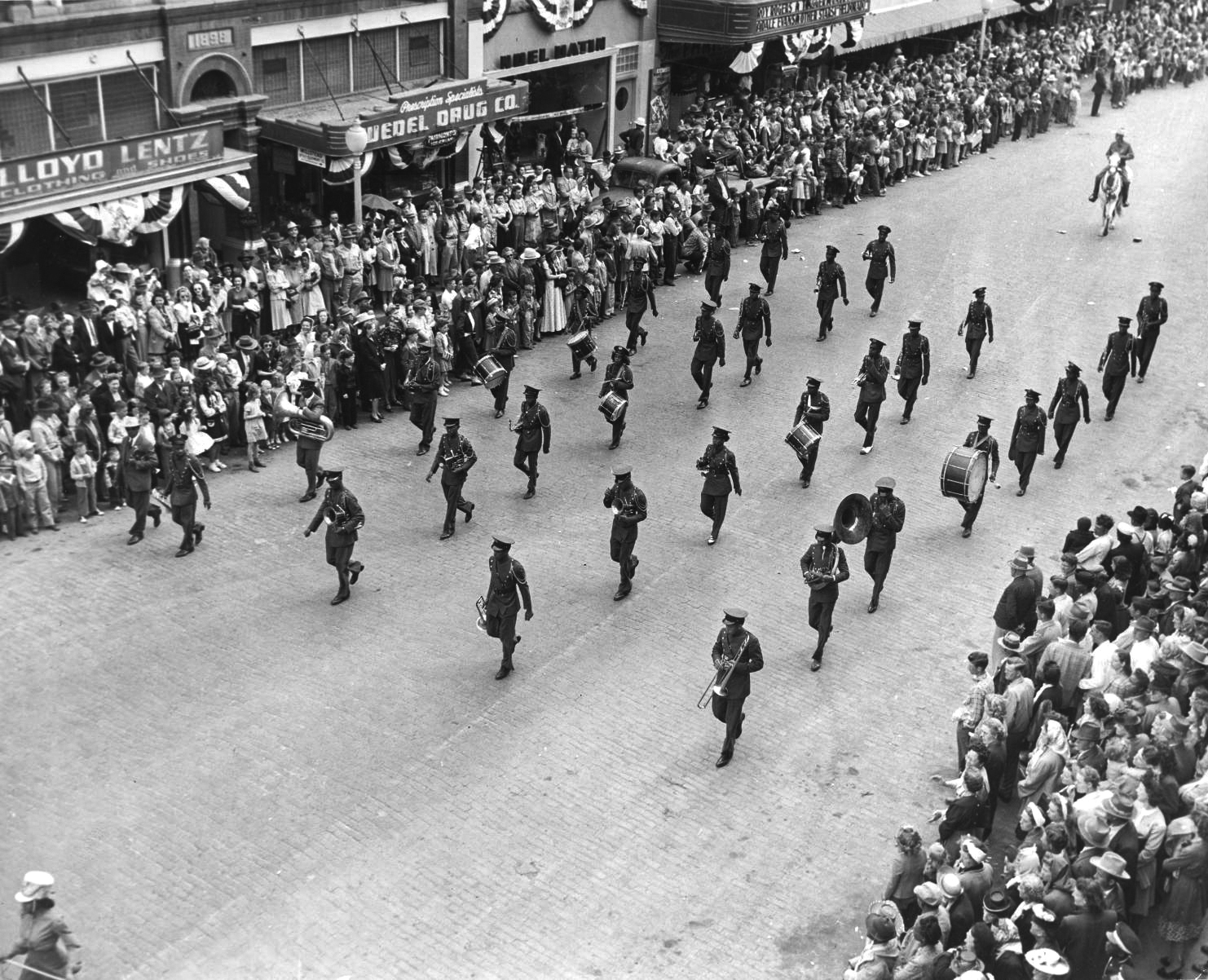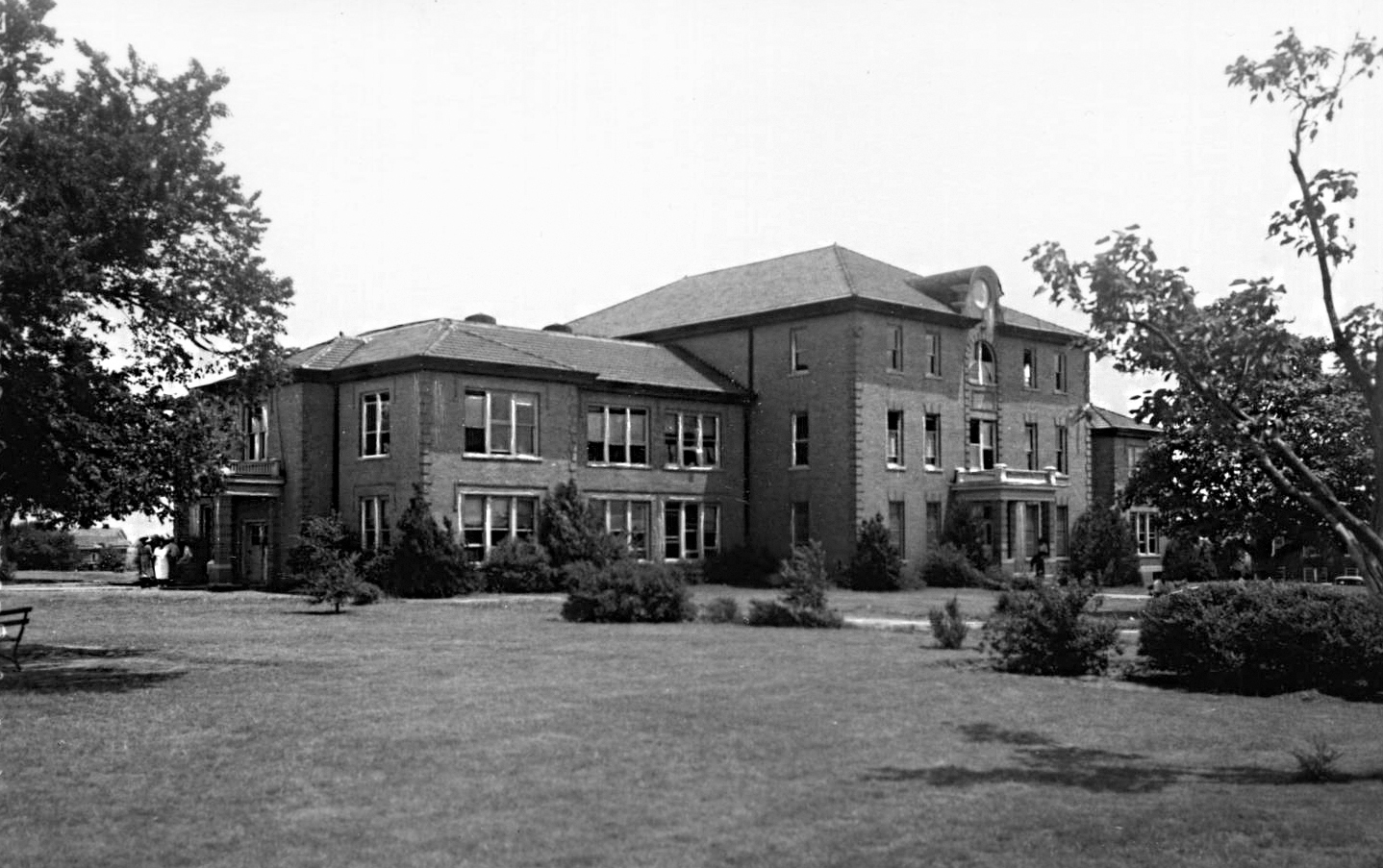
The Encyclopedia of Oklahoma History and Culture
LANGSTON UNIVERSITY.
Established in 1897 as the Colored Agricultural and Normal University (CANU), Langston University was envisioned at least seven years earlier with the 1890 Second Morrill Act. It required states or territories with land grant colleges either to admit African Americans or to provide an alternate school for them in order to qualify for federal funds. In 1892 three citizens of the All-Black town of Langston, including David J. Wallace, asked the Territorial Council to locate a college in the town. In 1897 Rep. William Gault introduced House Bill 151, creating the college and placing it at Langston in Logan County. By September 1898 teachers conducted the first classes at a Presbyterian Church and at Langston's public school, during the first building's construction. CANU lured Inman Page from the Lincoln Institute in Missouri to be the first president.
In accordance with the legislation CANU tried to provide African Americans with an industrial and agricultural curriculum, a normal or teacher's college, and a liberal arts curriculum, all with less funding than many Oklahoma institutions that provided just one of these missions. Under Page the university expanded in the number of students and in campus size. By 1915 the student population had grown from 41 to 639, and the campus had six main buildings.
For several years administrators debated the type of education that CANU should provide. One side advocated industrial-agricultural training (supporting Booker T. Washington's programs) and the other a liberal arts curriculum (following W. E. B. DuBois's efforts for political and social race equality). In 1915 the first president resigned amidst controversy, and the school shifted toward manual and technical training under Isaac McCutcheon, whose tenure lasted only six months, and under his successor, John Miller Marquess. In 1923 Isaac W. Young assumed the presidency and reinstated the college department. In 1927 state politics forced him to resign, but he regained the post in 1931, remaining until 1935. Other early presidents Zachary Hubert (1927–31), J. W. Sanford (1935–39), and Albert Turner (1940) had short terms yielding to the changes in state political administrations. Turner resigned after two days' service, to avoid controversy.
G. Lamar Harrison broke the trend and served for twenty years, proving a stable force and initiating several beneficial changes. In 1941 the name officially changed to Langston University through an act of the Oklahoma Legislature. The name of the college and the town honored John Mercer Langston, an African American educator and U.S. congressman from Virginia. During Harrison's tenure the on-campus high school joined the teacher training unit. In 1942 a herd of registered cattle was started and a prize Hereford bull was purchased from the Turner Ranch, many improvements occurred to the campus, including a modern sewage system, stadium, and library, and the school began printing its own catalog. By the end of Harrison's term the university held accreditation by at least five national associations.
During World War II the enrollment fell to as low as 314. After the war the G. I. Bill boosted enrollment to 855 in 1946–47, and it remained fairly steady, standing at 659 in 1960. After white colleges in Oklahoma and around the nation began accepting African American students, Langston dealt with another sensitive issue as some politicians began questioning whether the school should remain open. Harrison claimed that "until racial bias is totally eliminated in Oklahoma, a college like Langston University has the peculiar function of maintaining, preserving, and disseminating the cultural heritage of the Negro people."
In 1960 William H. Hale assumed the presidency, and he increased the student body to 1,336 by 1968. He organized a development foundation that provided scholarships and loans. He also expanded the campus, initiated faculty study grants, and convinced a larger number of industrial and governmental entities to hire new graduates. In 1969 the Board of Regents dismissed Hale in a secret meeting, prompting Langston students to march at the state capital in his defense. He began the plans for the Melvin B. Tolson (a former Langston professor and Poet Laureate of Liberia) Black Heritage Center, which at the beginning of the twentieth century held ten thousand books as well as art, video, and periodicals concentrating on African heritage.
From 1969 until 1979 the university had short-term leaders, including William Sims (1970–74), Thomas English (1975–77), and Samuel Tucker (1978). All had to deal with financial difficulties and turbulent politics, on and off campus. Stability again returned in 1979 when Ernest L. Holloway became the fourteenth president and guided the school into the twenty-first century. He had already served as interim president on two different occasions. In 1978 the State Regents for Higher Education assigned an urban mission to Langston, and the next year under Holloway the school opened extensions in Oklahoma City and Tulsa. The university also gained the professional programs of nursing and physical therapy. In 1984 the American Institute for Goat Research (changed to E (Kika) de la Garza Institute for Goat Research in 1990) was established and cooperated with Ethiopia, Mexico, China, and the Philippines. Another agricultural extension project involves aquaculture programs to provide information and technology for management and operation of fish farms and farm ponds.
In 1989, after an appropriation from the Oklahoma Legislature, the college created the E. P. McCabe Honors Program. The school soon began offering master's degrees in education and rehabilitation counseling and a doctoral degree in physical therapy.
Because of the new initiatives, enrollment increased steadily, and a number of whites enrolled in the historically Black college. In August 2004 there were 3,008 students enrolled, with 2,172 listed as African American. The President's Board of Advisors on Historically Black Colleges and Universities listed 105 four-year and two-year public and private institutions that were postsecondary academic entities founded before 1964 to educate African Americans. Langston was among the forty that were four-year public colleges.
See Also
COLLEGES AND UNIVERSITIES–STATE, INMAN EDWARD PAGE, OKLAHOMA STATE UNIVERSITY, UNIVERSITY OF OKLAHOMA








